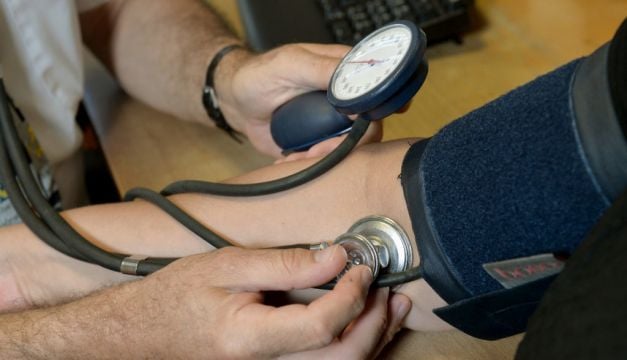A 10-minute scan could allow the detection and cure of the most common cause of high blood pressure, new research suggests.
Doctors at Queen Mary University of London, St Bartholomew’s Hospital, London and Cambridge University Hospital, used a new type of CT scan to light up tiny growths (nodules) in a hormone gland and cure high blood pressure by their removal.
The nodules glow shortly after an injection is given and highlight an obvious cause for the condition, the scientists say.
According to the study, one in 20 people with high blood pressure have these growths.
Researchers say their findings solve a 60-year problem of how to detect the hormone producing growth without a difficult procedure that is only available in a handful of hospitals, and often fails.
The research also found that, when combined with a urine test, the scan detects a group of patients who come off all their blood pressure medicines after treatment.
Morris Brown, co-senior author of the study and professor of endocrine hypertension at Queen Mary University of London, said: “These aldosterone-producing nodules are very small and easily overlooked on a regular CT scan.
“When they glow for a few minutes after our injection, they are revealed as the obvious cause of hypertension, which can often then be cured.
“Until now, 99 per cent are never diagnosed because of the difficulty and unavailability of tests. Hopefully this is about to change.”

Some 128 people took part in the study of a new scan after doctors found that their hypertension (high blood pressure) was caused by a steroid hormone, aldosterone.
The scan found that in two thirds of patients with increased levels of the hormone, this is coming from a benign growth in just one of the adrenal glands, which can then be safely removed.
The scan uses a very short-acting dose of a radioactive dye that only sticks to the nodule that produces the hormone.
Researchers suggest the scan was as accurate as the old catheter test, but quick, painless and technically successful in every patient.
Until now, the catheter test was unable to predict which patients would be completely cured of hypertension by surgical removal of the gland.
However, the combination of the new scan and urine steroid test identified 18 of the 24 patients who achieved a normal blood pressure without taking their prescribed drugs.
The research, published in Nature Medicine, was conducted on patients at Barts Hospital, Cambridge University Hospital, and Guy’s and St Thomas’s, and Universities of Glasgow and Birmingham.
It was funded by the UK's National Institute for Health and Care Research (NIHR) and Medical Research Council (MRC) partnership, Barts Charity, and the British Heart Foundation.
In most people with high blood pressure, the cause is unknown, and it requires life-long treatment by drugs.
Previous research by the group at Queen Mary University found that in 5-10 per cent of people with hypertension the cause is a gene mutation in the adrenal glands, which results in excessive amounts of the steroid hormone, aldosterone, being produced.
Aldosterone causes salt to be retained in the body, driving up the blood pressure.
Patients with excessive aldosterone levels in the blood are resistant to treatment with the commonly used drugs for high blood pressure, and at increased risk of heart attacks and strokes.







